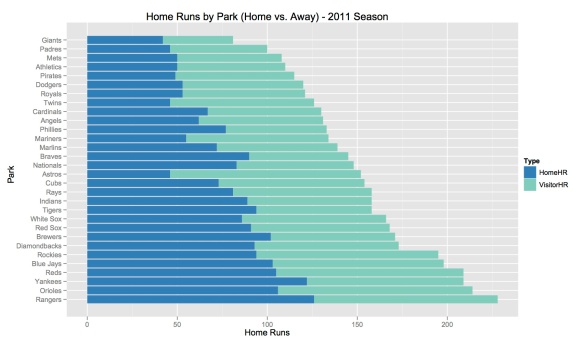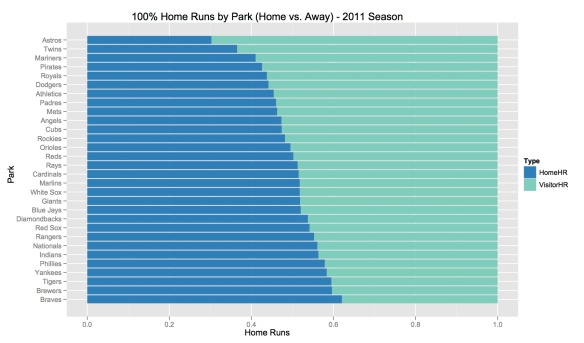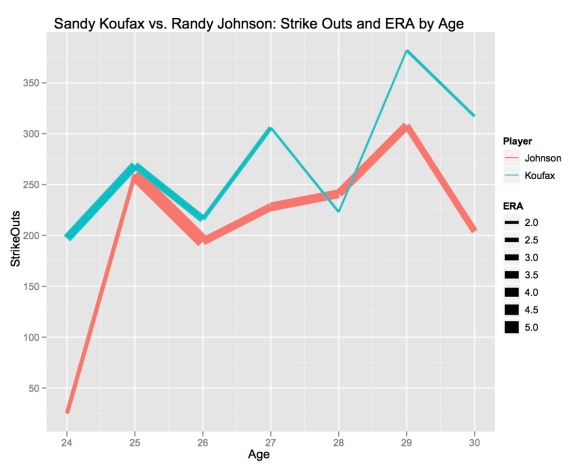I hate the Giants. Let this be known. What i was hoping to find was another reason to support my claim that their WS win in 2010 was a complete fluke. So when digging through the game logs for the 2011 season from Retrosheet I noticed that the park with the fewest home runs for the whole season was AT&T Park. Boom! Giants suck right? I’ve seen little league teams with a higher team ISO! HA! Except i’m just smart enough to know that before I proclaim my findings I should probably dig just a little deeper. So the next step was to break down the total number of home runs by Home Team vs. Visiting Team. My victory was short lived. It turns out that the Giants, as a team, had 42 home runs on the season at AT&T Park to the visiting teams 39. Just better than 50/50. Fine! So the question then was who was the worst team by this completely arbitrary and new metric that I can’t think of a clever name for right now but am open to suggestions…The answer was the Houston Astros. They miserable 2011 Astros hit 46 home runs in their own park (more than the Giants I might add) and gave up 106 to all visiting teams. %30.26 of the balls that left Minute Maid Park were hit by the home team. Painful if you’re an Astros fan. And even worse knowing that in 2 years that place is going to be full of American League teams. The winner of this game for the 2011 season is the Atlanta Braves with %62.07 of Home Runs at Turner Field coming off of native bats.
The charts below were made using ggplot2 and retrosheet game logs:










